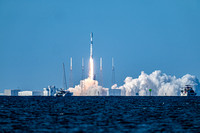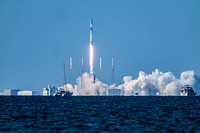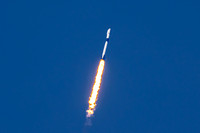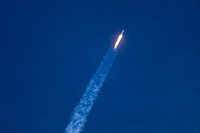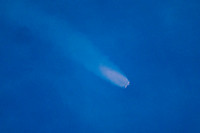Excerpts from spaceflightnow.com... More than half of the spacecraft SpaceX needs to fill the company’s first-generation fleet of 4,408 Starlink satellites are now in orbit, following the addition of 106 new internet relay nodes launched on two Falcon 9 rockets Friday and Saturday.
Two Falcon 9 rockets each delivered 53 Starlink payloads to orbit after liftoff from Vandenberg Space Force Base in California and Cape Canaveral Space Force Station in Florida, SpaceX’s 19th and 20th missions of the year.
The second of the back-to-back launches took off at 4:40:50 p.m. EDT (2040:50 GMT) Saturday from pad 40 at Cape Canaveral. The Falcon 9 was powered by a new reusable first stage booster — tail number B1073 — that made a successful landing on SpaceX’s drone ship in the Atlantic Ocean about eight-and-a-half minutes after launch.
The Falcon 9 headed downrange northeast from Cape Canaveral, vectoring thrust from nine Merlin main engines generating 1.7 million pounds of thrust. The nine kerosene-fueled engines shut off two-and-a-half minutes into the mission, allowing the booster to separate from the Falcon 9’s single-engine second stage.
The booster extended titanium grid fins and maneuvered to a tail-down orientation using cold gas nitrogen thrusters, setting up for a hypersonic re-entry and vertical landing on the football field-sized drone ship.
Full story
here.




